With the recent rise of renewable energy systems, it’s no surprise that we have seen a paralleled rise in the popularity of energy storage solutions. Storage of renewable energy represents the next step towards energy independence for those looking to obtain clean energy practices. Batteries effectively expand the capability of your solar energy system by allowing you to store excess solar power for renewable energy usage 24/7.
Often, those looking to install a new solar and battery system or add battery storage to their existing solar system will come across the terms AC, DC, AC-Coupled and DC-Coupled. To most people, these phrases may not carry much weight, but understanding the difference between AC and DC-powered components can maximise your understanding of your system and the benefits it can provide you.
Read More: Batteries - the Key to a Successful Solar System
Read More: Store Your Excess Solar Energy With a Solar Battery
Difference Between AC and DC Electricity
Let’s start with a basic understanding of how electricity works; an electric current flows from a negative pole to a positive pole. Think of a high school science experiment where you run a black lead from one end of a battery and connect it to a light bulb, and then run a red lead from the bulb to the other end of the battery. The result: a lit bulb.
This process is true for Direct Current (DC) energy. DC energy is one of two electrical current possibilities, with Alternating Current (AC) energy being the other. AC energy is a little more complex, oscillating between the two terminals and changing direction periodically, rather than just flowing from negative to positive.
Let’s break these down a little further.
DC Electricity
DC stands for Direct Current and refers to a type of electrical current that continuously flows in one direction. The current flows from the negative terminal of a power source, such as a battery, through an electronic device, giving it power, and back to the positive terminal of the power source to close the circuit. As opposed to AC electricity, DC flow and amperage never change direction.
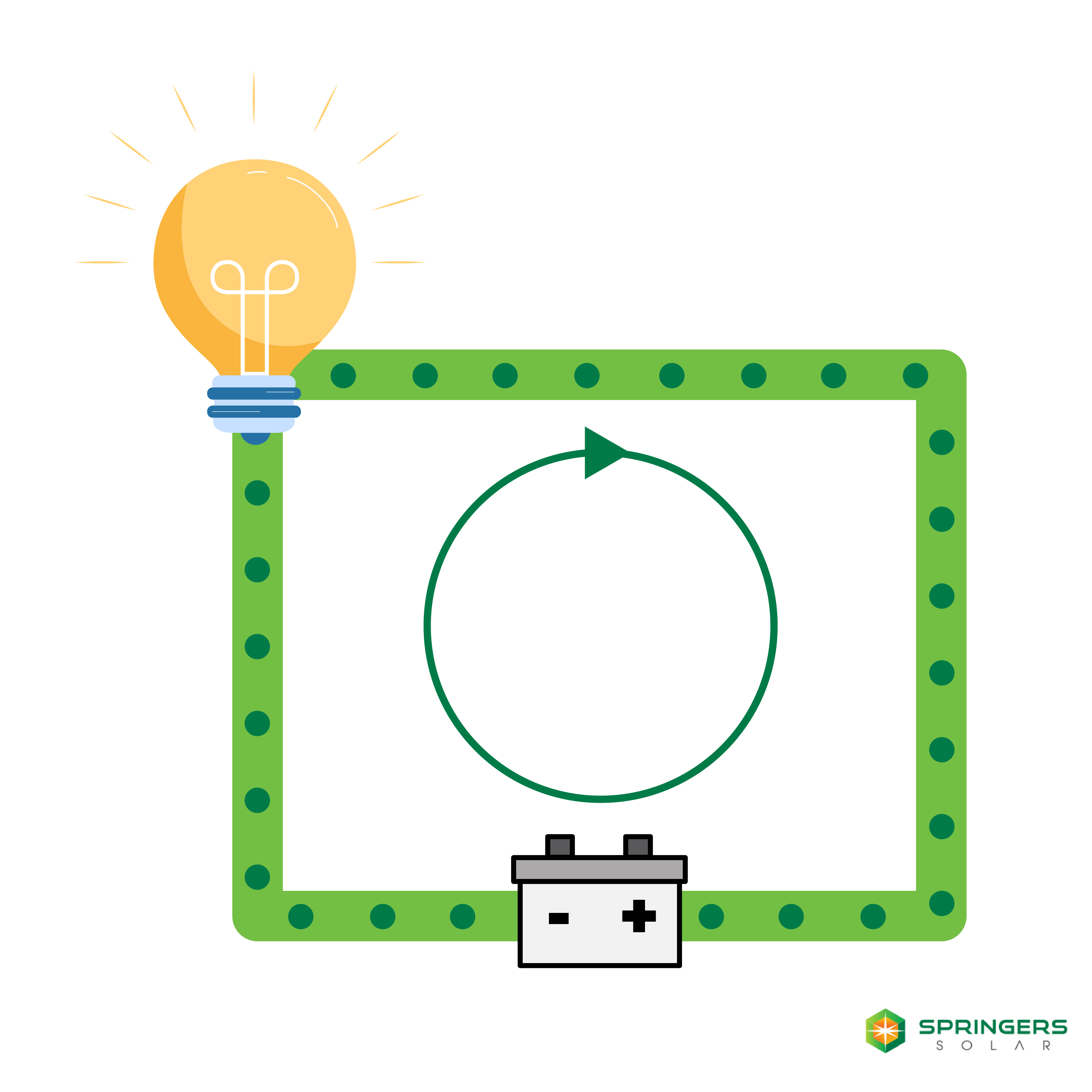
DC power is commonly produced by sources such as batteries, solar panels and thermocouples. It is used in all electronic devices with a battery as the power source and is also used to charge batteries, therefore providing power to rechargeable devices such as laptops and mobile phones. These devices usually (unless it’s an Apple product) come with a charging cord and wall plug, which convert the AC energy of your household power into the DC energy to charge the device. DC power is commonly used in lower voltage applications such as automotive, nautical and aeronautical applications.
AC Electricity
AC stands for Alternating Current and refers to a type of electrical current that periodically changes the direction of the current’s flow. This means that the flow of the current changes between positive and negative directions periodically, often switching many times per second. In Australia, the current will change direction 50 times per second, which is expressed as 50 hertz (Hz). The switching creates a continuous back-and-forth motion for the current. Despite this motion, the energy is still continuously providing power to the electronic device, so it’s not losing power and regaining it between the directional switches.
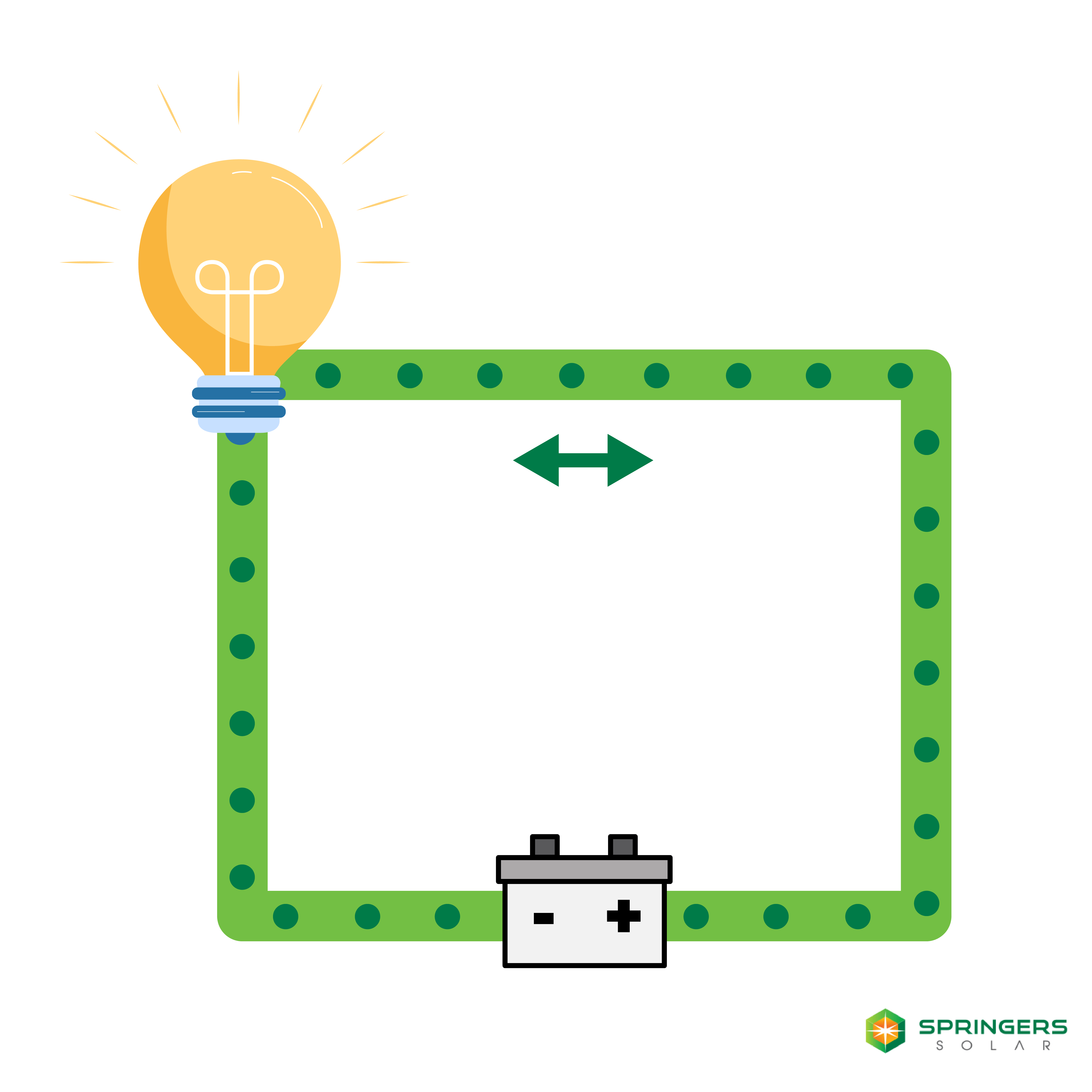
AC power is most commonly produced by power plants and is used across power distribution systems (the grid), as it is cheaper to generate and easier to transmit over large distances, which the grid needs to do. Transmitting electricity over large distances can result in some energy loss, but the amount of energy lost using AC power is much less than when using DC power.
One of the major advantages of AC power is that it can be easily modified using a transformer. This allows high voltages to be transmitted over various distances, before being transformed down to safer voltages for commercial and residential uses. From the power plant, the energy is run through a transformer to step up the voltage. It is then transmitted across high-voltage power lines. Before being supplied to a home or business, it is run through a transformer that steps down the voltage to provide usable power.
Therefore the power supplied by the grid to our homes and businesses is AC power. This means that the electrical sockets in your home will supply AC power, and anything that requires DC power will usually come with an AC-to-DC adapter. However, larger appliances such as dishwashers and refrigerators run on AC electricity.
So there are two different types of electrical current… How is this important to solar and battery systems? Does it matter if your solar has “AC” or “DC” components, and if so…why? First, let’s take a look at solar batteries and how their electrical systems work.
Do Batteries Store AC or DC Power?
Batteries store energy as DC power and require a separate component known as an inverter to convert this DC power into AC power to be used for AC appliances or loads. This is the case for all batteries from the AA batteries we use for the TV remote to the high-voltage batteries used to power off-grid homes. The energy is stored as DC power and needs to be converted. Typically, this conversion is done by the battery inverter, which sits as a separate component in the solar system.
However, we are seeing a newer design of battery in what's come to be known as AC-coupled battery systems. These battery systems contain an integrated inverter which enables them to operate as a stand-alone energy storage unit for solar storage or backup power. These batteries, albeit still quite expensive, are becoming a more popular solution, especially for those looking to add a solar battery to their existing solar system.
With that being said, most of the standard systems will fall into one of two categories;
AC-Coupled Systems
DC-Coupled Systems
While these may seem pretty straightforward, it is important to note the differences between the two setups and most importantly understand the different components used in the systems.
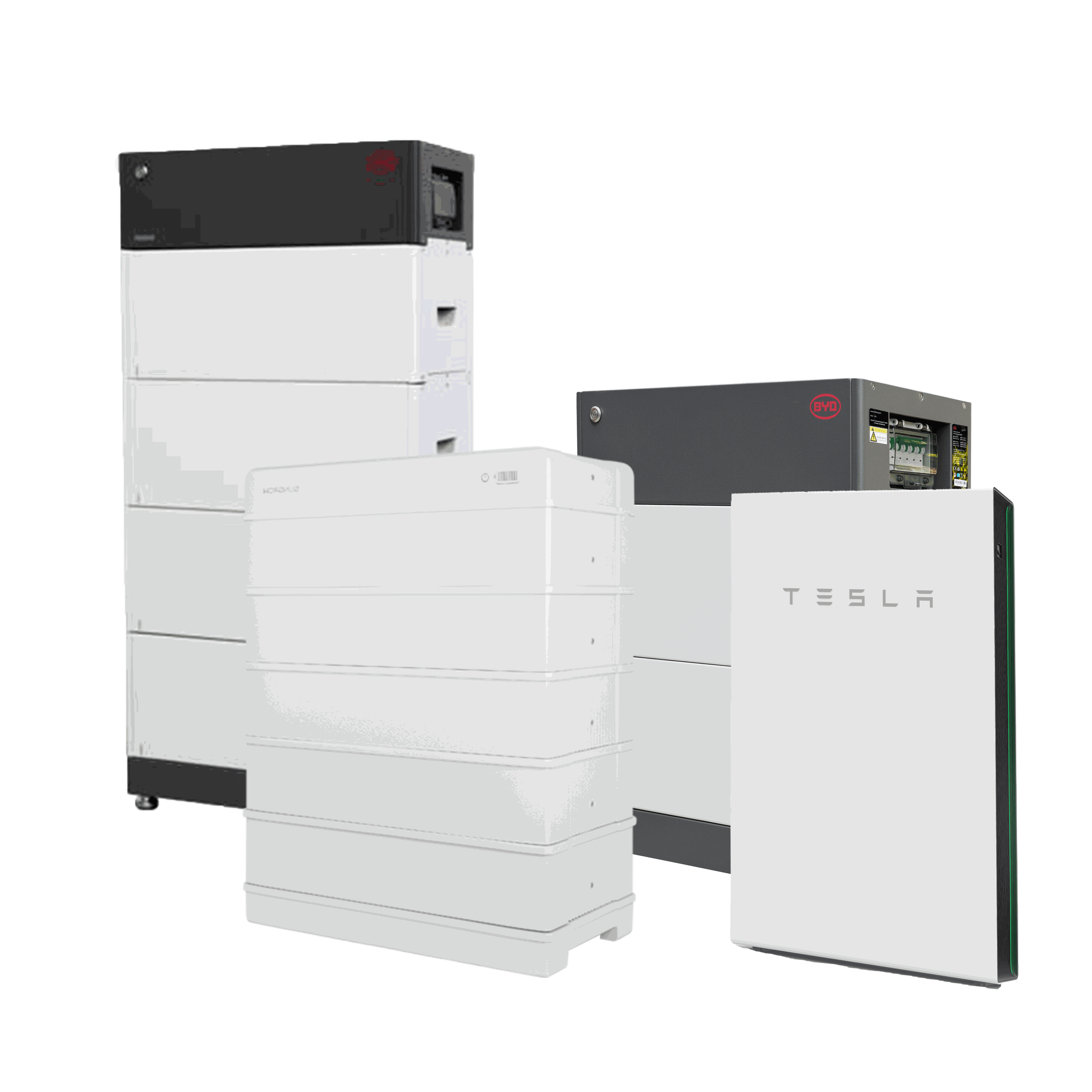
What is an AC Coupled System, and how do you know if it’s right for you?
In an AC-Coupled system, the DC power created by the solar panels flows into a solar inverter. This inverter takes the DC power and converts it into AC power. This AC power can then flow directly into your home electrical system and can be used to power your household appliances. To store excess solar energy it will flow as AC power from the solar inverter into a battery inverter, which converts it back to DC power to be stored within the battery.
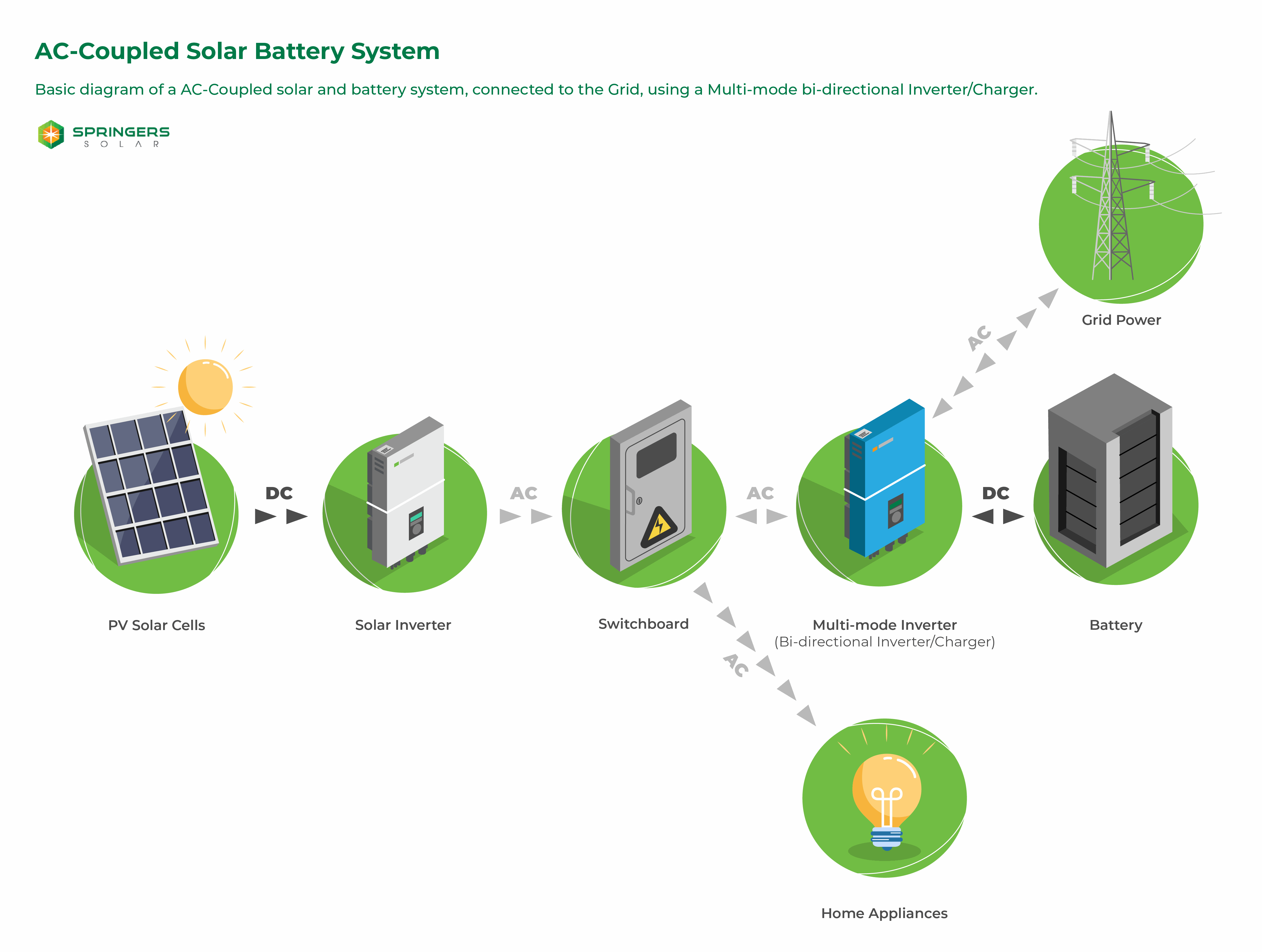
In an AC-Coupled system, any energy that is stored in the battery will need to be converted three separate times before it’s used.
- The solar inverter converts the solar-generated DC energy generated into AC power
- The battery inverter converts the AC power into DC power that can be stored in the battery
- The battery inverter converts the stored DC power into AC power that can be used to power the property
Historically, this type of AC-Coupled system has been popular due to the components and technology readily available to the general public. Advancements in technology have also helped improve the efficiency of the process.
For homeowners looking to add battery storage to their pre-existing solar array, an AC-Coupled system is likely the best solution as it’s easy to install and is competitive in price. There is no requirement to replace the existing inverter with a Hybrid inverter as the required inverter to charge the battery is part of the AC-coupled battery system.
One of the unfortunate disadvantages of the traditional AC-Coupled system is that it provides a slightly lower efficiency than a DC-Coupled system. This is because converting energy from one type to another results in a small efficiency loss. AC Coupled systems provide a 90-94% efficiency (Svarc, Clean Energy Reviews, 2020).
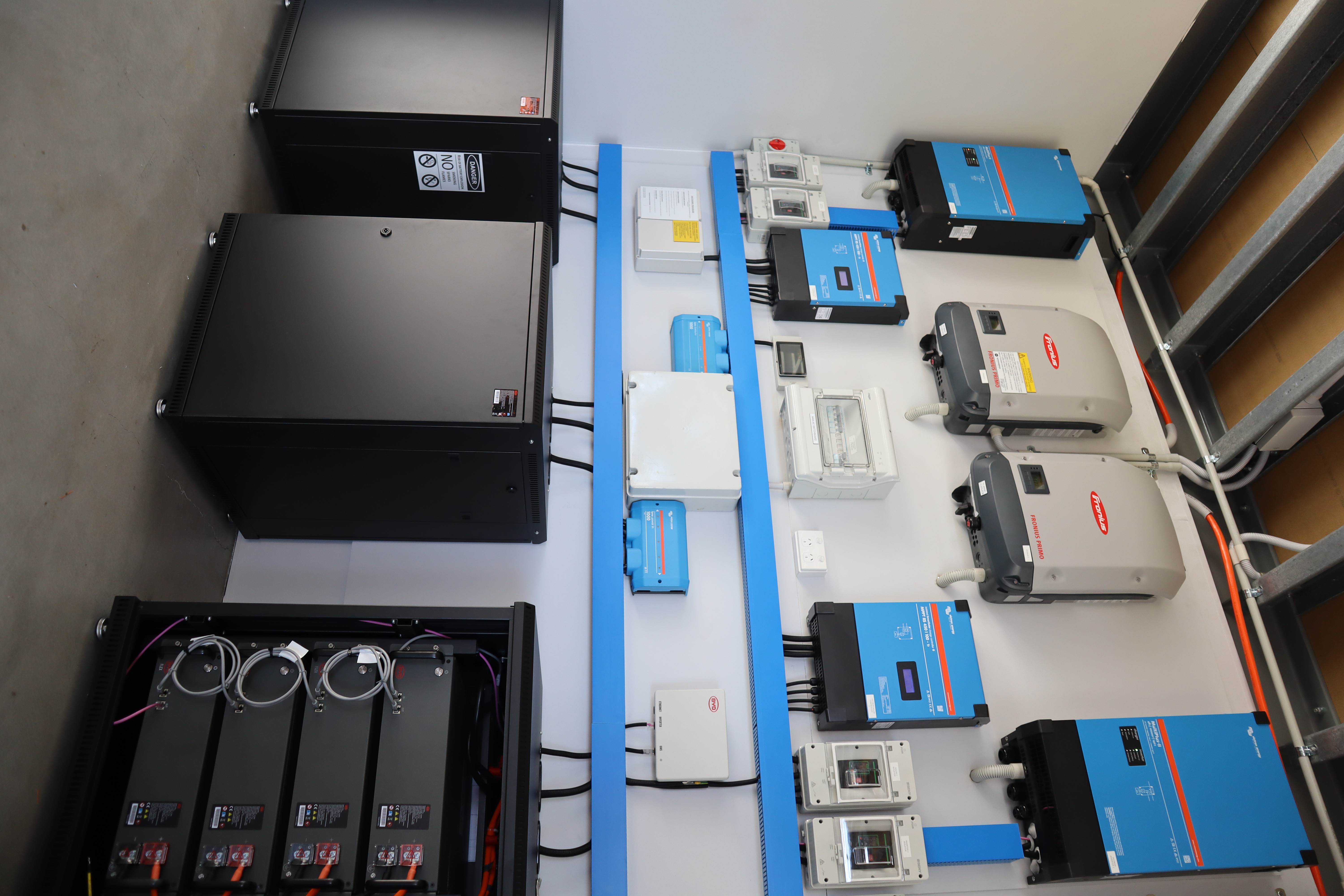
Springers Solar customer case study - 25.8kW AC-Coupled system with 60kWh battery storage on an off-grid residential home.
Despite this, these systems are usually more efficient at powering high AC loads during the day as that power doesn’t need to be diverted to a battery before use. For example, a household with an EV Charger would benefit from an AC-Coupled system as the EV can be charged directly from solar generation, most EV wall chargers are AC-compatible, and EV charging requires a large energy draw.
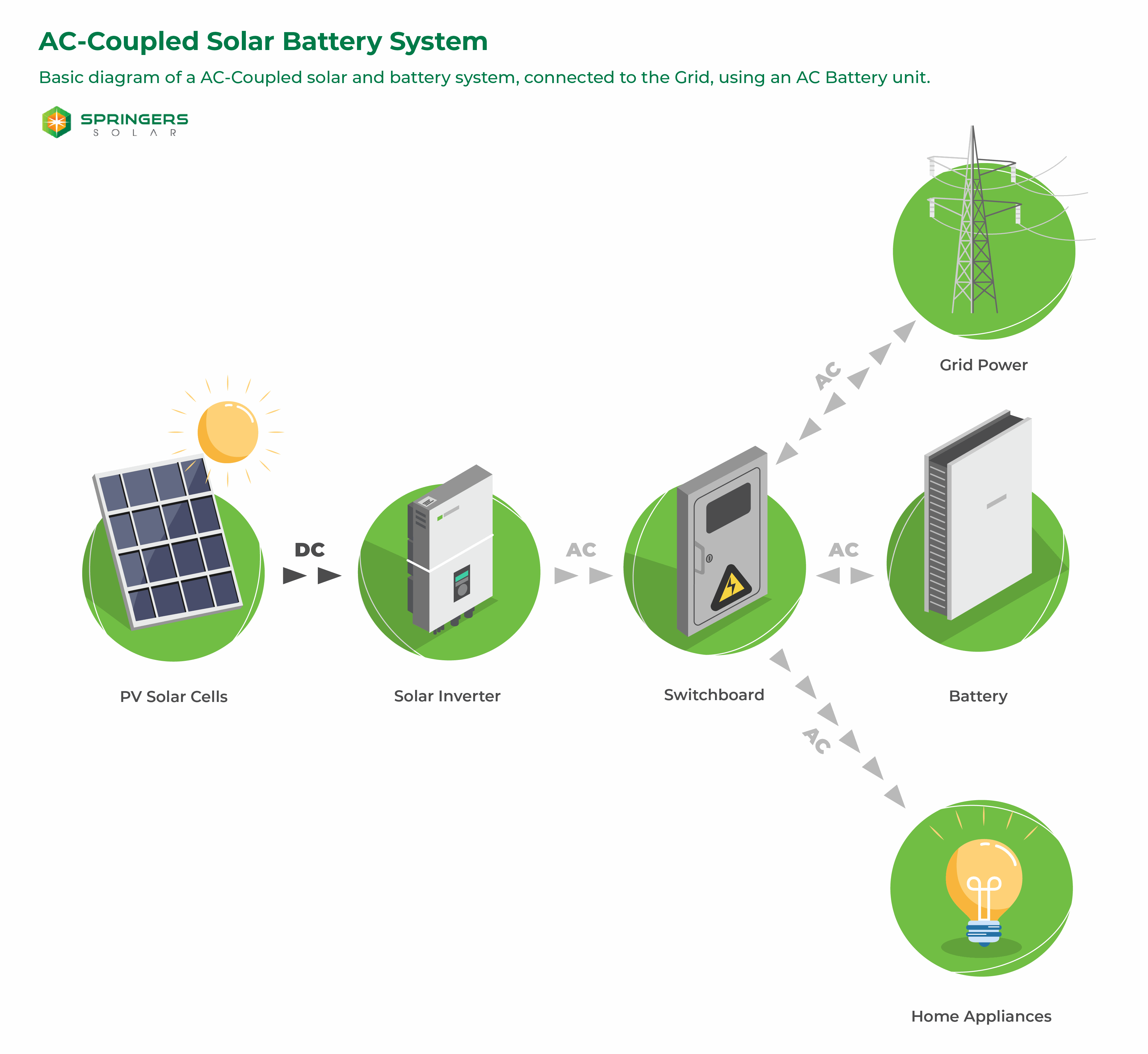
.jpg)
The Tesla Powerwall system offers reliable solar energy storage. With the ability to stack up to 10 Powerwalls and a 10-year warranty, it's no wonder the Powerwall is one of the most trusted solar batteries on the market.
Read More: Maximising Solar Energy with Tesla Powerwall
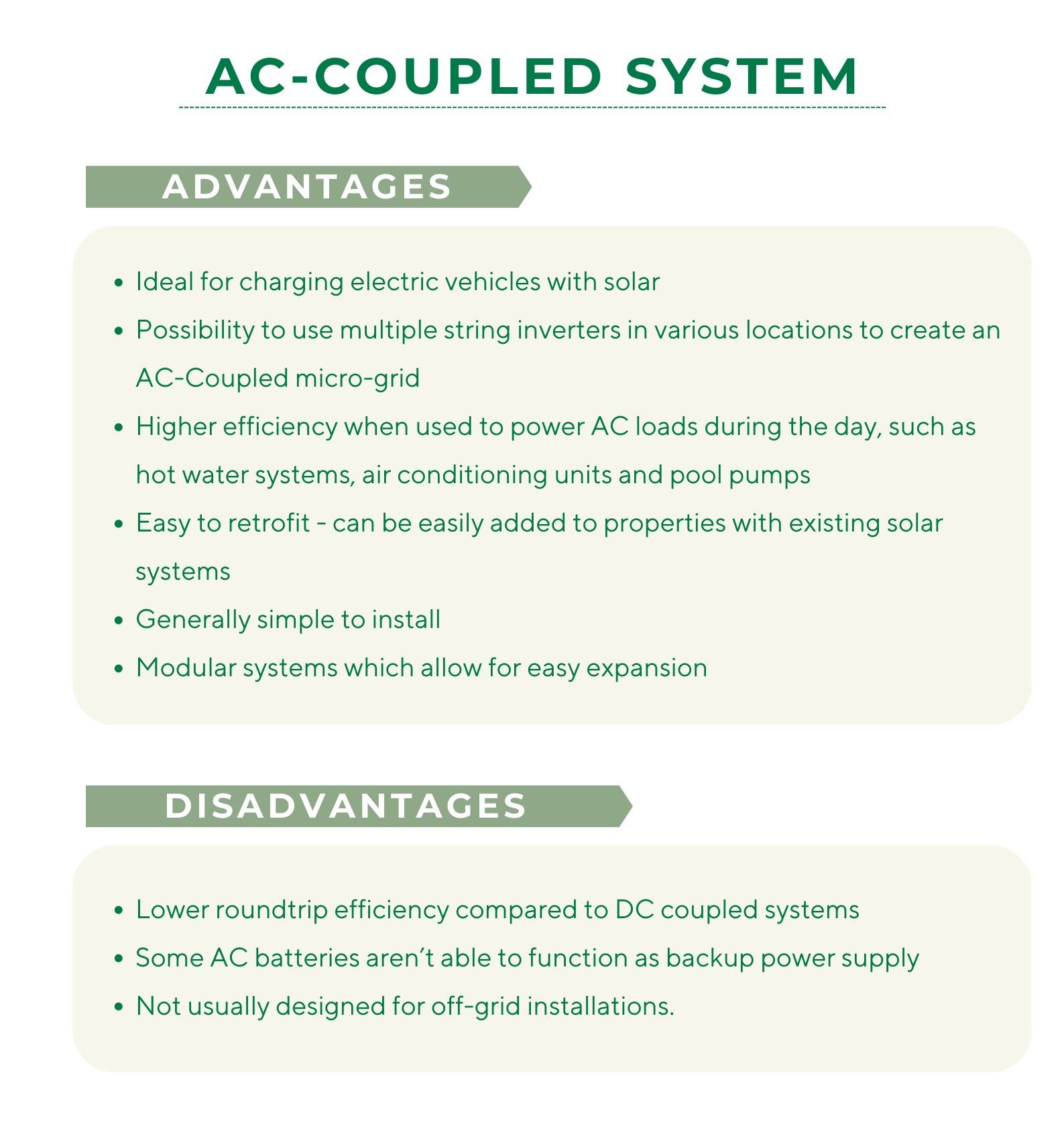
What is a DC Coupled System, and how do you know if it’s right for you?
In a DC-Coupled system, the DC power created by the solar panels flows directly into your solar battery system for storage. The power from the batteries must still be converted into AC power for home use, however, with the DC-Coupled system, the energy is only converted once since it flows directly into the batteries through a solar charge controller.
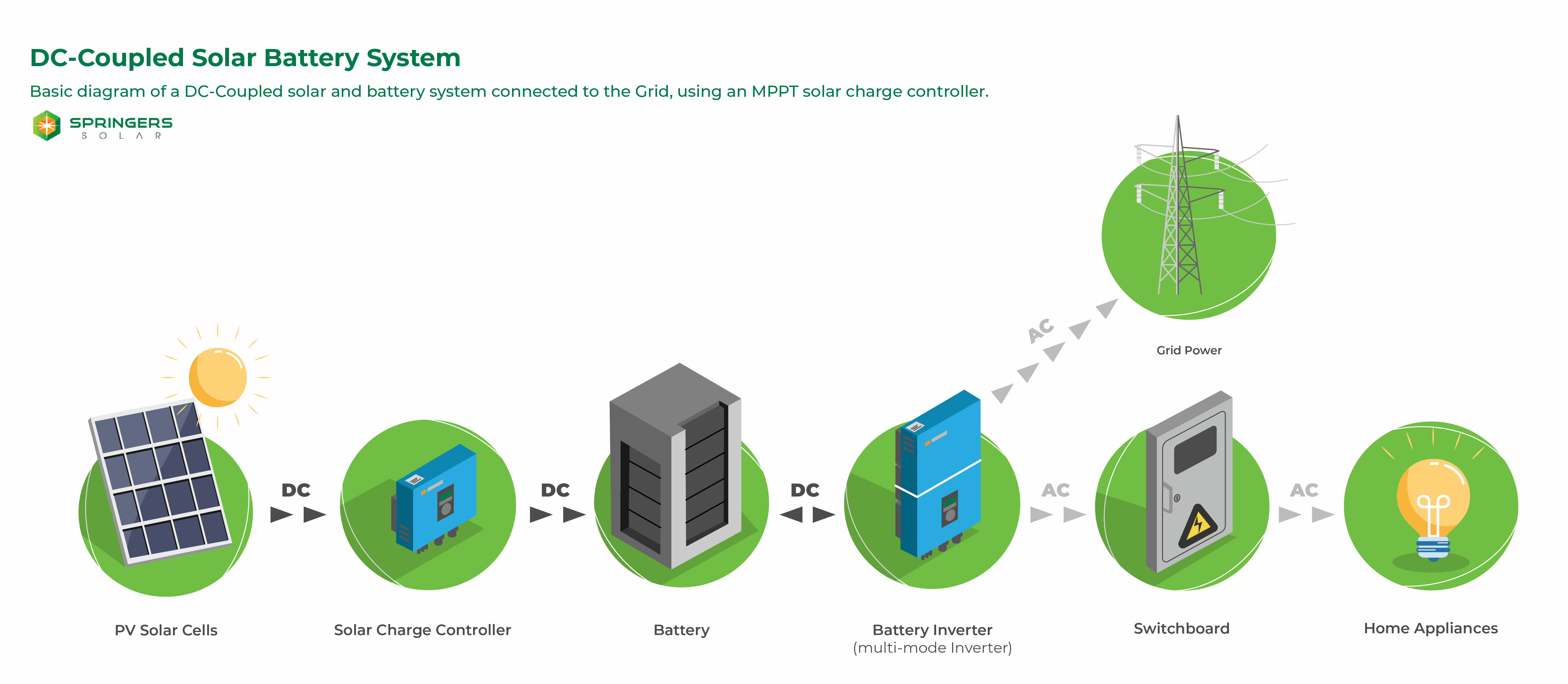
If you’re looking at installing a brand new system, inclusive of both a solar array and battery storage, then choosing a DC-Coupled system from the get-go offers some advantages. Due to the fewer conversions needed to use the generated energy, the efficiency of a DC-Coupled system is slightly higher than that of an AC-Coupled system. DC-Coupled systems offer ~98% efficiency (Svarc, Clean Energy Reviews, 2020).
Another benefit is that DC-Coupled systems require fewer components to complete the system. Most commonly, DC-Coupled systems will use solar regulators (also known as solar charge controllers) to charge the batteries directly from your solar array, along with an inverter to convert DC to AC energy which can be used to power your household appliances.
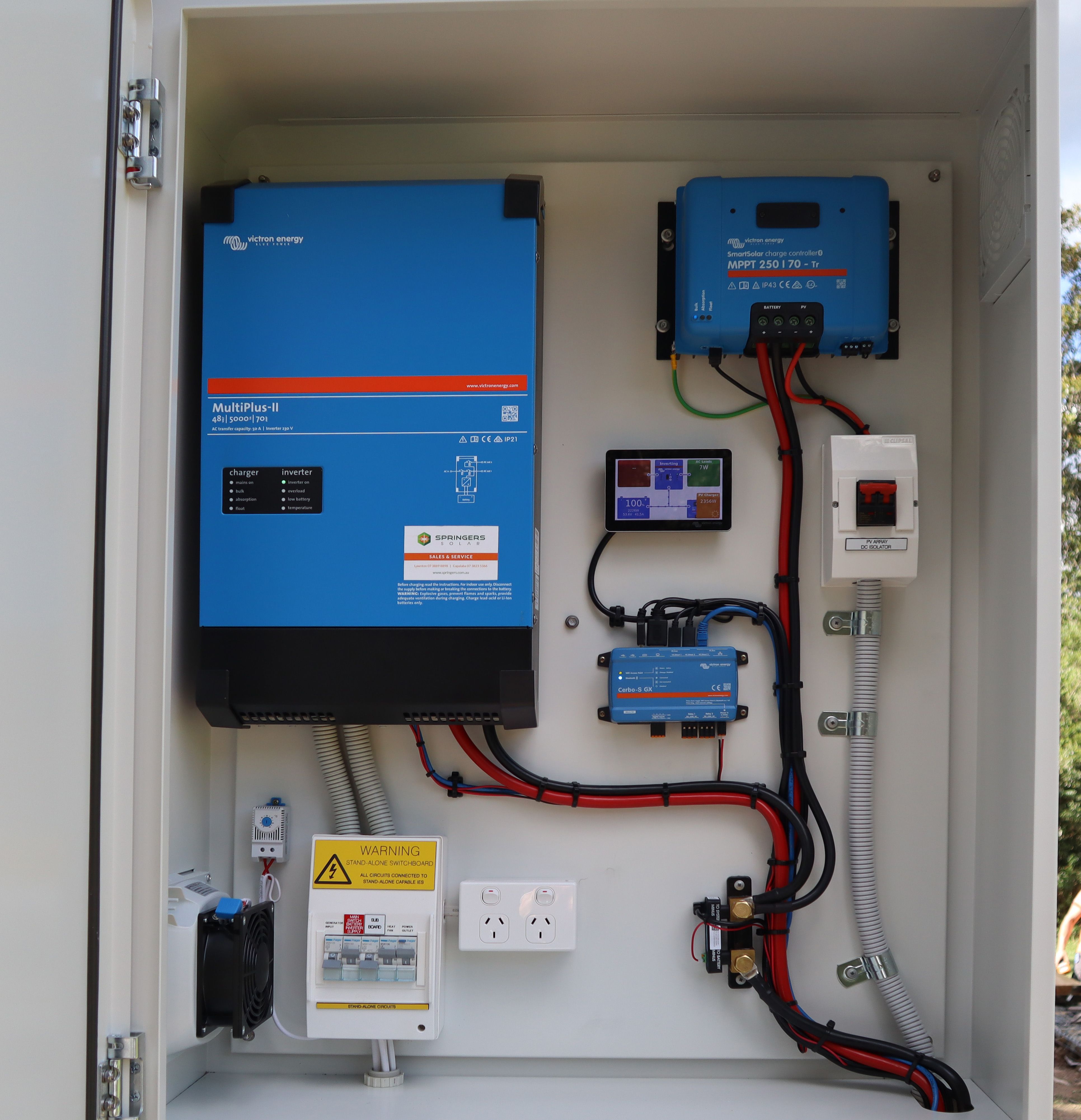
Springers Solar customer case study - 3.4kW DC-Coupled system with 16kWh battery storage on an off-grid residential home
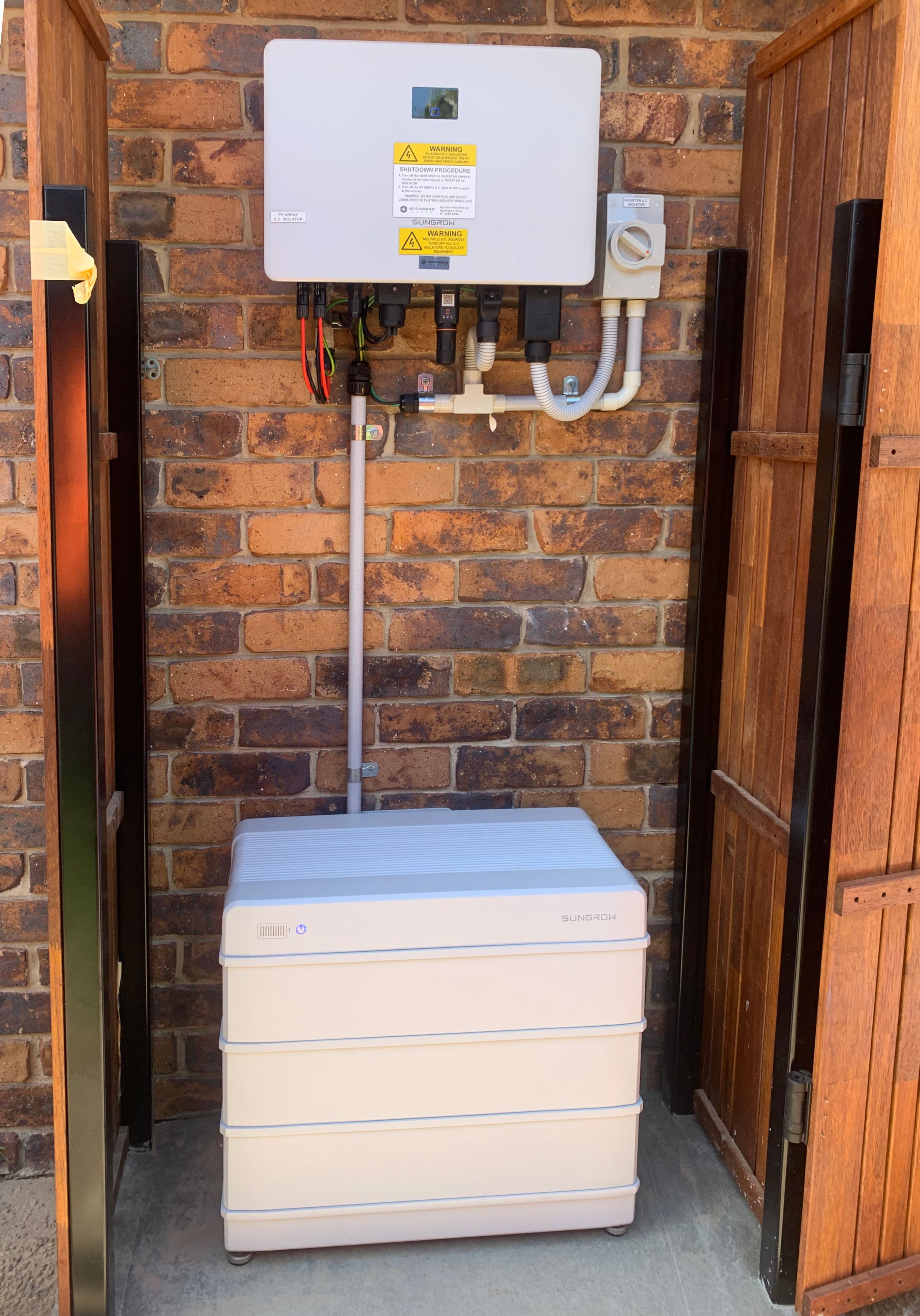
DC-Coupled systems have been used in many off-grid solar installations and are frequently used in smaller capacity systems such as RVs and tiny homes. This is mostly due to the small system size and efficiency rates being optimal for space-limited applications.
The Sungrow High Voltage LFP Battery range offers flexibility and customisable options with the ability to support up to 8 of the LFP Battery modules per unit and up to 4 units in parallel, thus creating a 9-100kWh capacity range.
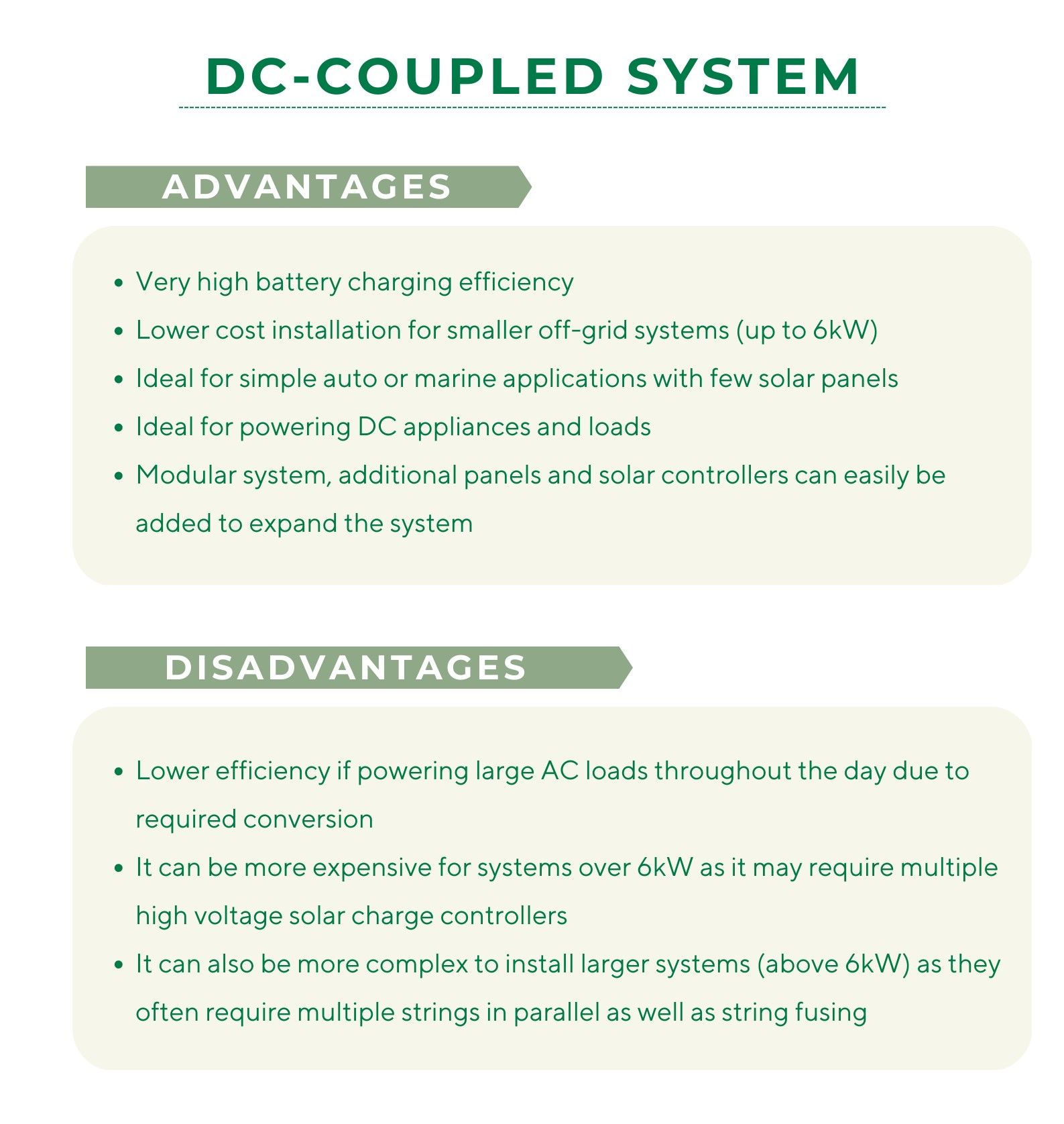
Summary
Whether you're looking to expand the capabilities of your current solar array or looking to install a new system, adding battery storage will significantly increase the benefits of your system. Whether you rely solely on the energy you create and store to power your home or you want guaranteed energy for all occasions, having access to stored solar energy will save you money, provide you with reliable power 24/7, and allow you greater energy independence.
When it comes down to it, choosing between AC-Coupled and DC-Coupled systems is not as easy as one being better than the other. Each system and property will have different energy requirements, cost allocations, and renewable energy goals, meaning that the best choice is completely different for each individual.
While it’s easy to say that AC-Coupled is a good choice when adding to an existing solar system and DC-Coupled is a simple solution for new installations, it’s more complicated than that and this is not a steadfast rule. At the end of the day, both systems will provide you with all the benefits of a solar energy and storage system, so your choice will come down to your parameters.
With all of these factors to consider (plus many more besides how to power your system), it is important to work directly with your solar provider. It can be overwhelming to be presented with all the variables when it comes to choosing solar, which is why it’s important to pick the right solar installer.
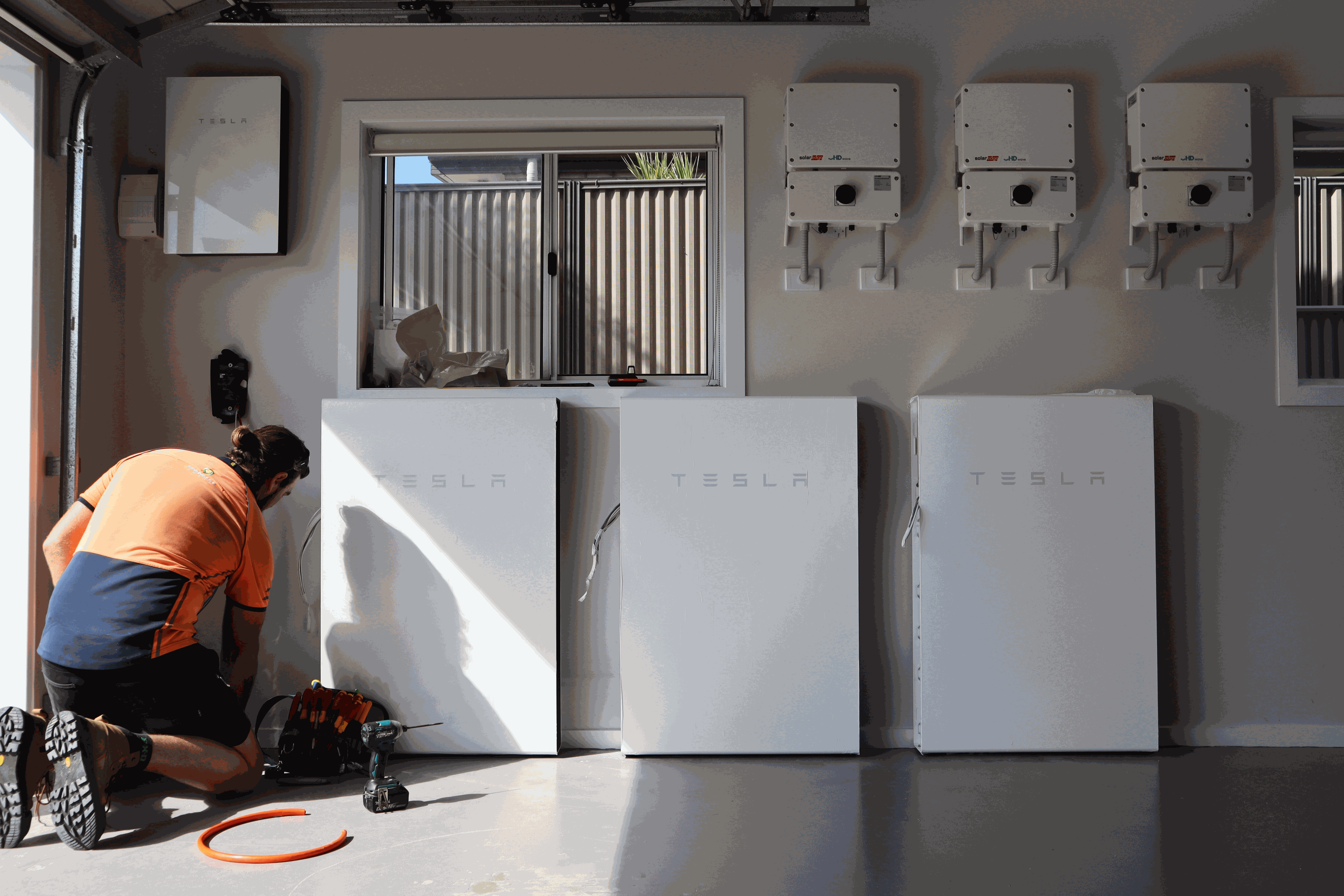
Solar Will Only Save You Money and Perform as Promised When Installed by a Reputable and Long-Standing Installer
It is critical to choose your solar installer carefully if you decide to proceed with solar. Unfortunately, the solar industry is fraught with companies whose aim is to make a quick buck with a cheap installation with cheap components. If you think the price is too good to be true, then it probably is.
Always choose a solar installer that has been trading for at least 10-15 years. A long-standing installer will be able to honour their warranties and service guarantees. A ‘solar orphan’ is someone whose installer has fallen out of business and thus has no points of contact for warranty claims or system support (unfortunately, this happens a lot more than you may think!).
Your solar installer should also complete a site inspection and analysis of your personal energy needs, to design a system that is most suited to your energy goals. On-site inspections are preferable, as this will help to avoid any hidden fees or additional costs that may be incurred come the day of installation (as pricing is always subject to inspection).
In summary, the most important things to look for when selecting an installer are evidence of customer testimonials focused on reliability and honesty, a high standard of workmanship, warranty periods, and quality components.
Springers Solar | Queensland's Most Experienced Solar Installer
Springers Solar provides quality components with proven performance, backed by industry-leading warranties, and dedicated after-sales support. Thousands of satisfied customers over more than 21 years of operation make Springers Solar one of the most established and experienced solar companies in Australia.
Springers Solar has received multiple awards for design and installation and is a certified/preferred installer for a large range of solar panel, inverter, and solar battery manufacturers, including Tesla, REC, and SolarEdge.
Our dedicated in-house team of electrical engineers, project managers, solar PV designers, solar installers and electricians work closely with you before, during, and long after your project is completed. Springers Solar offers an industry-leading 10-year workmanship warranty which is a testament to our qualified staff and offers you outstanding value and peace of mind.
Visit our About Us page here!
AC vs. DC Batteries